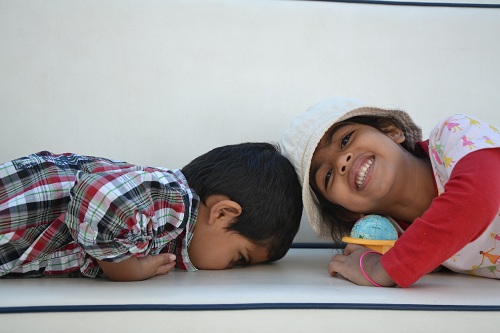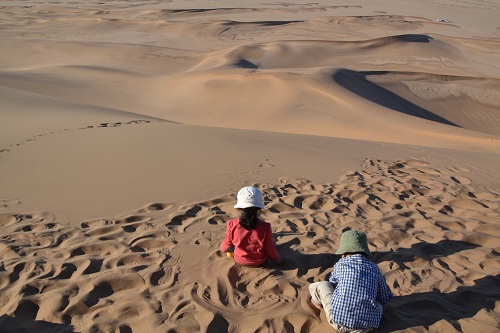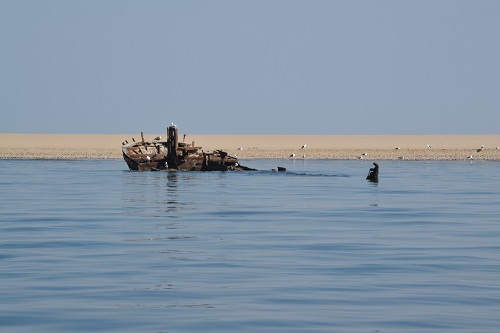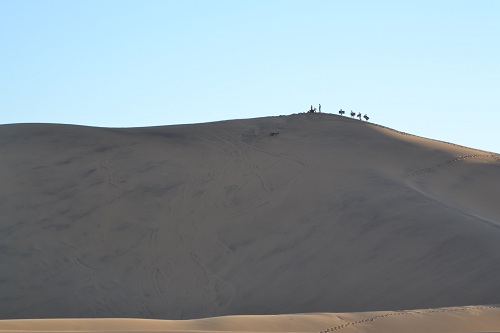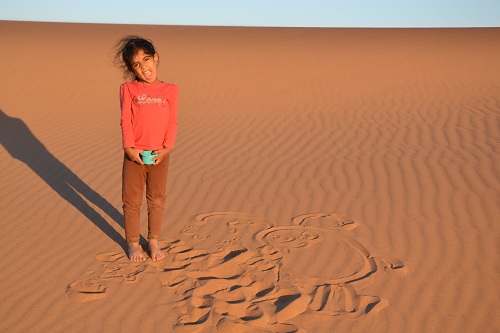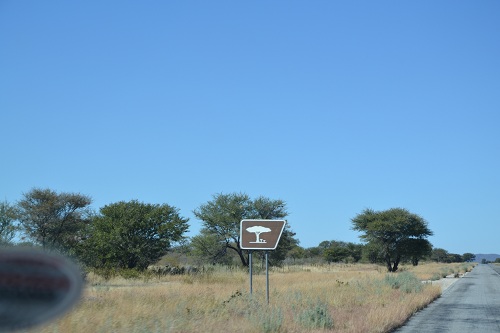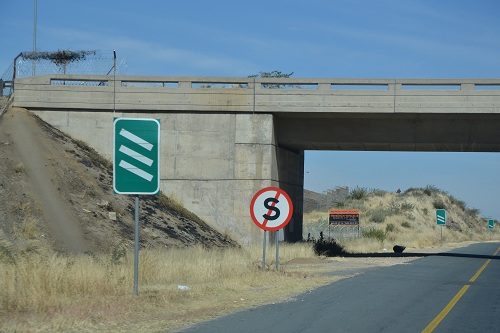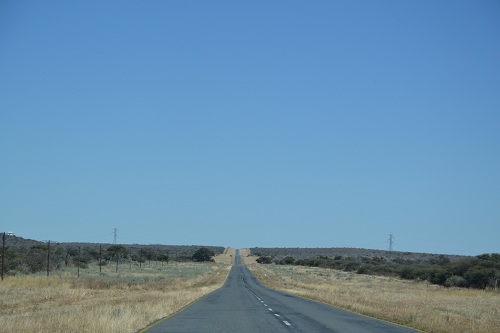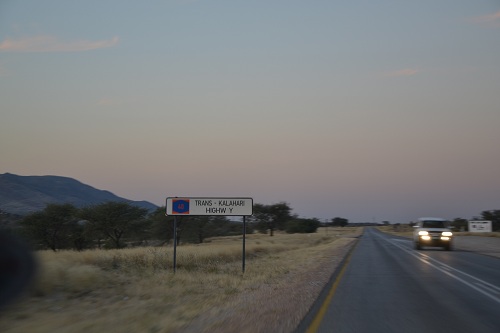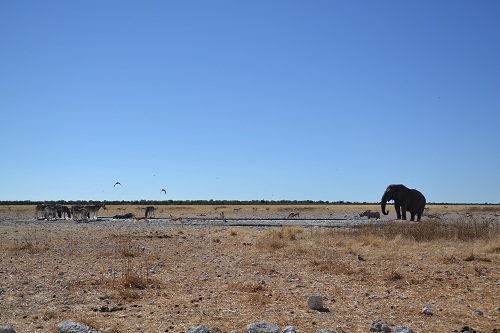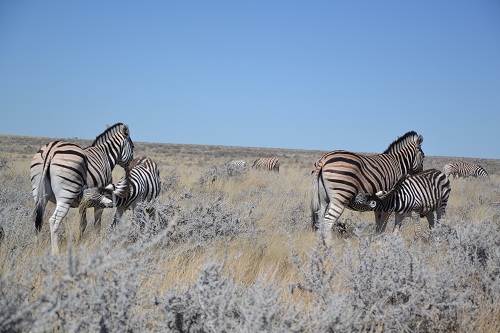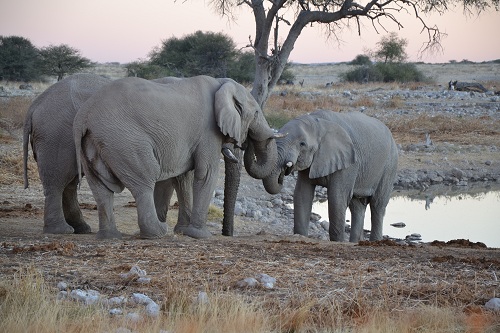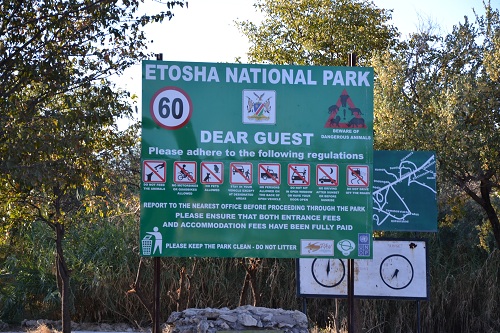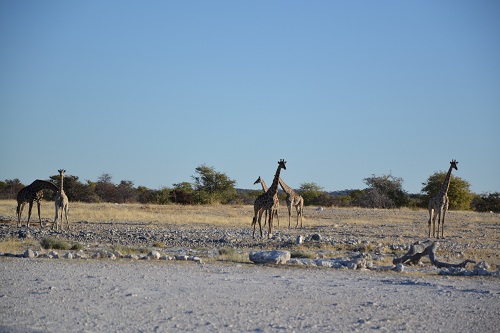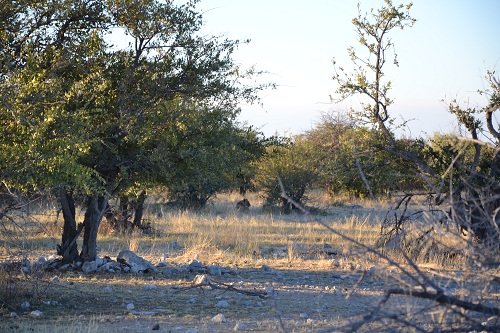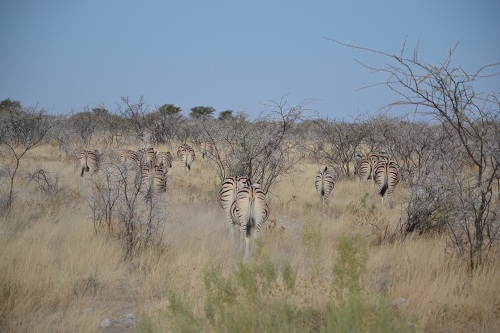Here’s another adventure that would have required a sign-off in America – allowing a two and four year old to hang off a catamaran and cuddle wild seals. That’s what we did in Walvis Bay (whale bay) on our last day in Namibia.
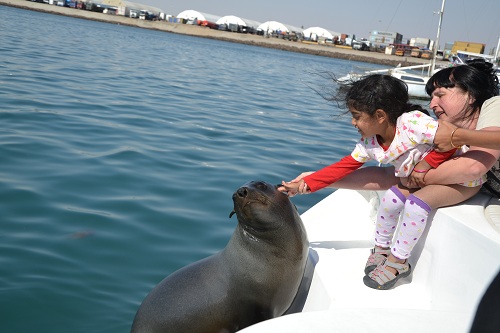
Walvis Bay is the only deep sea harbor along Namibia’s otherwise foreboding coastline, making it a main shipping and fishing port.
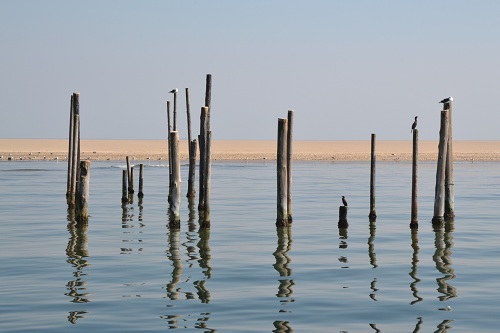
Several pelicans trailed our boat as we undocked and made our way to a dwindling colony of flamingos. Changing weather patterns have altered the birds’ migration habits and now more flamingos spend the entire year in Etosha National Park rather than make the migration back to Walvis Bay. Our second neighborhood stop was at a seal colony, where the deafening barks of the seals had Kayan frowning, “too loud!” In addition to seals, the kids expectantly watched the water for bottle nosed dolphins.
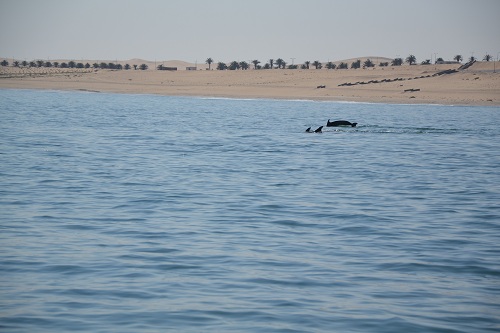
For nourishment, we feasted on oysters, fresh from an oyster farm in Walvis Bay. We introduced oysters to Ava when she was one, on a beach in Puerto Plata as a fisherman freshly shucked them for us. Despite the number of oysters we’ve collectively consumed over the years,we never knew how they are farmed. We watched as men hoisted up baskets of shells and learnt that a Chinese fishing company (more on how China is already ruling the world in a later post…) had an industrious idea of transplanting Chilean oysters to Walvis Bay and seeing how they fare in the cold plankton rich waters. The same oyster that takes up to three years to mature in Chile reaches succulence within 10 months in Namibia. The result is a massive oyster farm off the coast of Namibia that sends 80% of its stock to Beijing, according to our catamaran captain. Luckily, we got to dine on some of the 20% that remains in and around Southern Africa.
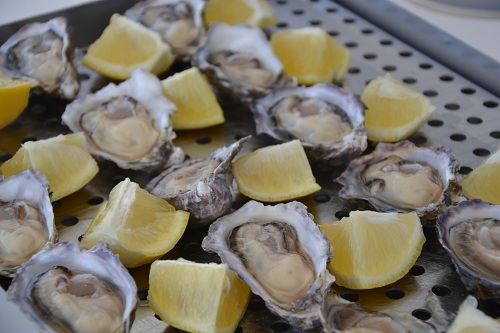
Between our safari in Etosha and our day on Walvis Bay, Namibia has provided us with some rich animal encounters. The kids have been able to see the creatures they read about in books and visited in aquariums and zoos. As our catamaran approached the dock, I saw Ava and Kayan engaged is some sort of imaginative play. When I asked them what they were doing, Ava barked, “We are seals!”
